Motorola Solutions 89FT3811 ELB VHF 2-Way Radio (RLD1036A) User Manual Ex8A RF Safety Booklet
Motorola Solutions, Inc. ELB VHF 2-Way Radio (RLD1036A) Ex8A RF Safety Booklet
Contents
- 1. Ex 8 User Manual
- 2. Ex8A RF Safety Booklet
Ex8A RF Safety Booklet
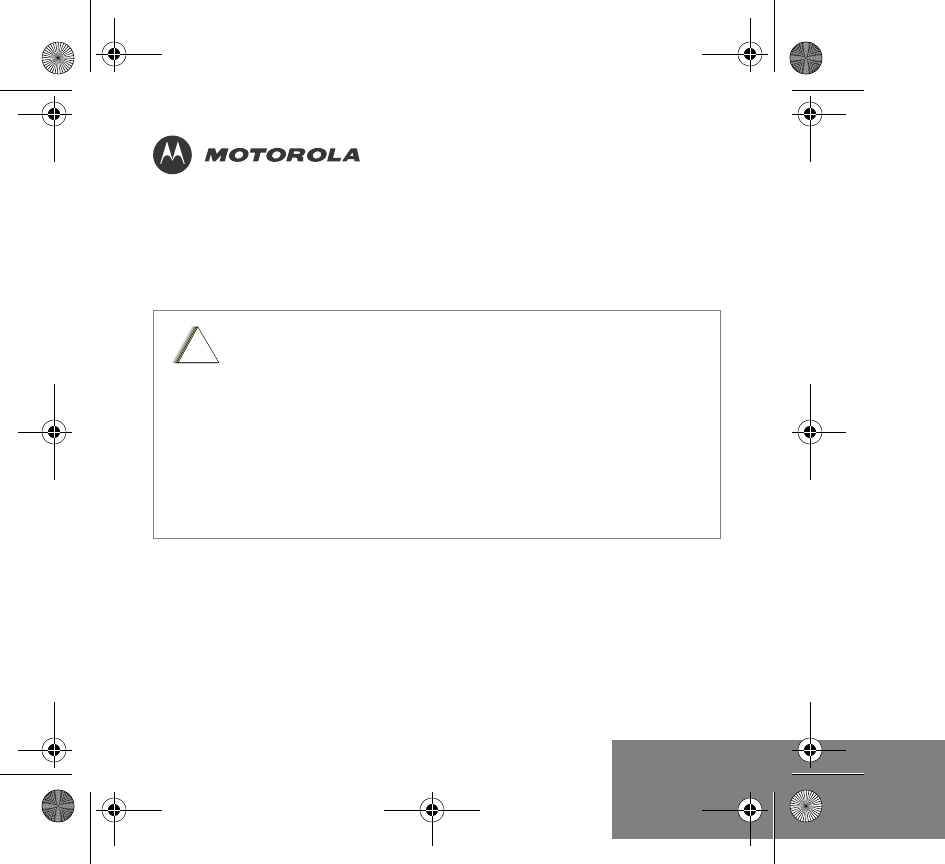
English
Product Safety and RF Energy Exposure Booklet
for Portable Two-Way Radios
The information provided in this document supersedes the general safety
information contained in user guides published prior to February 2002.
BEFORE USING THIS RADIO, READ THIS BOOKLET WHICH
CONTAINS IMPORTANT OPERATING INSTRUCTIONS FOR
SAFE USAGE AND RF ENERGY AWARENESS AND CONTROL
INFORMATION AND OPERATIONAL INSTRUCTIONS FOR
COMPLIANCE WITH RF ENERGY EXPOSURE LIMITS IN
APPLICABLE NATIONAL AND INTERNATIONAL STANDARDS.
ALSO READ THE OPERATIONAL INSTRUCTIONS FOR SAFE
USAGE. FOR RADIOS THAT HAVE BEEN APPROVED AS
INTRINSICALLY SAFE, READ THE INSTRUCTIONS AND
INFORMATION ON INTRINSIC SAFETY ON PAGE 10 OF THIS
BOOKLET.
!
C a u t i o n
© Motorola, Inc. 2004
8000 W. Sunrise Blvd., Ft. Lauderdale, FL 33322 68P81095C98
68P81095C98-C
95C98-C.book Page 1 Wednesday, October 27, 2004 11:59 AM
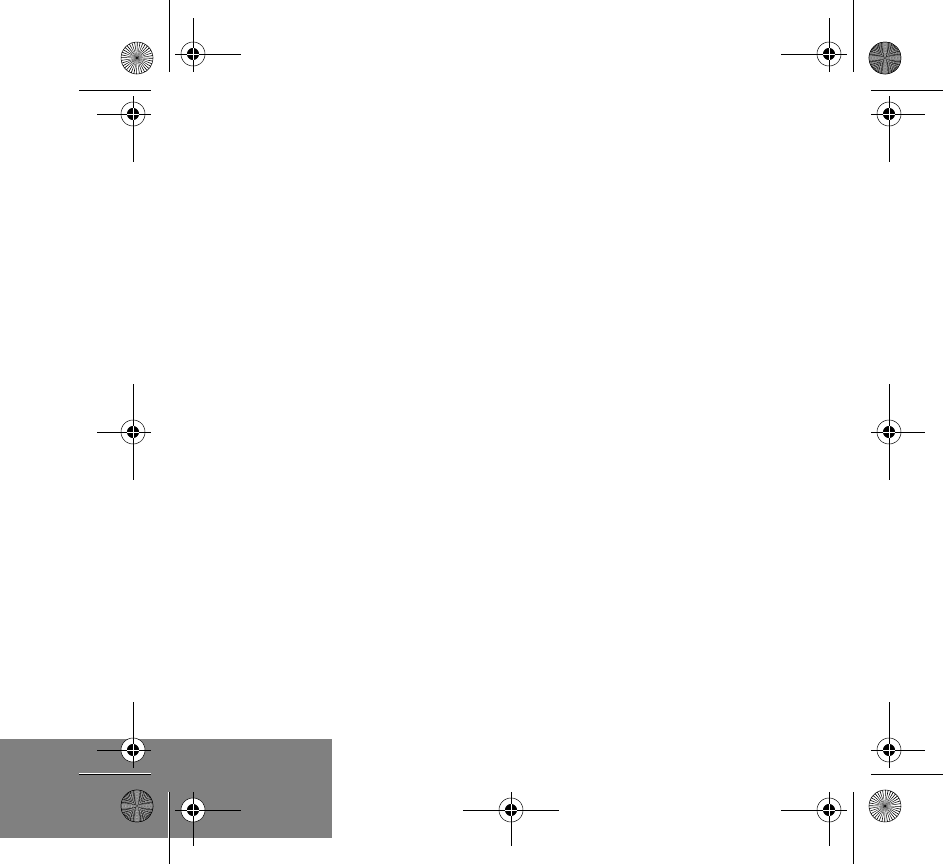
2
English
RF Energy Exposure Awareness and Control Information
and Operational Instructions for Occupational Use
NOTICE: This radio is intended for use in occupational/controlled conditions
where users have full knowledge of their exposure and can
exercise control over their exposure to meet the occupational limits
in FCC and International standards. This radio device is NOT
authorized for general population consumer use.
This two-way radio uses electromagnetic energy in the radio frequency (RF)
spectrum to provide communications between two or more users over a distance.
It uses radio frequency (RF) energy or radio waves to send and receive calls. RF
energy is one form of electromagnetic energy. Other forms include, but are not
limited to, sunlight and x-rays. RF energy, however, should not be confused with
these other forms of electromagnetic energy, which when used improperly, can
cause biological damage. Very high levels of x-rays, for example, can damage
tissues and genetic material.
Experts in science, engineering, medicine, health, and industry work with
organizations to develop standards for safe exposure to RF energy. These
standards provide recommended levels of RF exposure for both workers and the
general public. These recommended RF exposure levels include substantial
margins of protection.
All Motorola two-way radios are designed, manufactured, and tested to ensure
they meet government-established RF exposure levels. In addition, manufacturers
also recommend specific operating instructions to users of two-way radios. These
instructions are important because they inform users about RF energy exposure
and provide simple procedures on how to control it.
95C98-C.book Page 2 Wednesday, October 27, 2004 11:59 AM

3English
Please refer to the following websites for more information on what RF energy
exposure is and how to control your exposure to assure compliance with
established RF exposure limits:
http://www.fcc.gov/oet/rfsafety/rf-faqs.html
http://www.osha.gov/SLTC/radiofrequencyradiation/index.html
Federal Communication Commission (FCC) Regulations
The FCC rules require manufacturers to comply with the FCC RF energy
exposure limits for portable two-way radios before they can be marketed in the
U.S. When two-way radios are used as a consequence of employment, the FCC
requires users to be fully aware of and able to control their exposure to meet
occupational requirements. Exposure awareness can be facilitated by the use of
a product label directing users to specific user awareness information. Your
Motorola two-way radio has a RF Exposure Product Label. Also, your Motorola
user manual, or separate safety booklet includes information and operating
instructions required to control your RF exposure and to satisfy compliance
requirements.
Compliance with RF Exposure Standards
Your Motorola two-way radio is designed and tested to comply with a number of
national and International standards and guidelines (listed below) for human
exposure to radio frequency electromagnetic energy. This radio complies with
the IEEE (FCC) and ICNIRP exposure limits for occupational/controlled RF
exposure environments at operating duty factors of up to 50% talk-50%
listen and is authorized by the FCC for occupational use only. In terms of
measuring RF energy for compliance with these exposure guidelines, your radio
generates measurable RF energy only while it is transmitting (during
talking), not when it is receiving (listening) or in standby mode.
NOTE: The approved batteries, supplied with this radio, are rated for a 5-5-90
duty factor (5% talk-5% listen-90% standby) even though this radio
complies with FCC occupational exposure limits and may operate at duty
factors of up to 50% talk.
95C98-C.book Page 3 Wednesday, October 27, 2004 11:59 AM
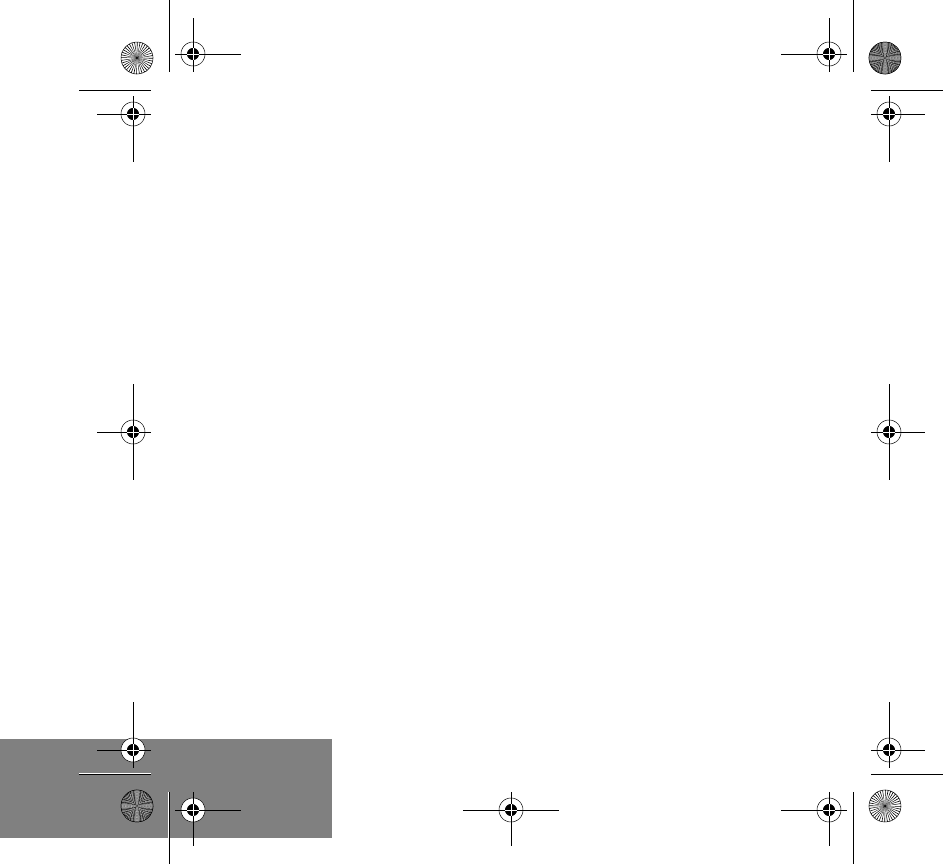
4
English
Your Motorola two-way radio complies with the following RF energy
exposure standards and guidelines:
• United States Federal Communications Commission, Code of Federal
Regulations; 47CFR part 2 sub-part J
• American National Standards Institute (ANSI) / Institute of Electrical and
Electronic Engineers (IEEE) C95. 1-1992
• Institute of Electrical and Electronic Engineers (IEEE) C95.1-1999 Edition
• International Commission on Non-Ionizing Radiation Protection (ICNIRP) 1998
• Ministry of Health (Canada) Safety Code 6. Limits of Human Exposure to
Radiofrequency Electromagnetic Fields in the Frequency Range from 3 kHz to
300 GHz, 1999
• Australian Communications Authority Radiocommunications (Electromagnetic
Radiation – Human Exposure) Standard, 2003
• ANATEL ANNEX to Resolution No. 303 of July 2, 2002 "Regulation of limitation
of exposure to electrical, magnetic and electromagnetic fields in the radio
frequency range between 9 KHz and 300 GHz" and "Attachment to resolution #
303 from July 2, 2002"
RF Exposure Compliance and Control Guidelines and Operating
Instructions
To control your exposure and ensure compliance with the occupational/controlled
environment exposure limits, always adhere to the following procedures.
Guidelines:
• Do not remove the RF Exposure Label from the device.
• User awareness instructions should accompany device when transferred to
other users.
• Do not use this device if the operational requirements described herein are not
met.
95C98-C.book Page 4 Wednesday, October 27, 2004 11:59 AM
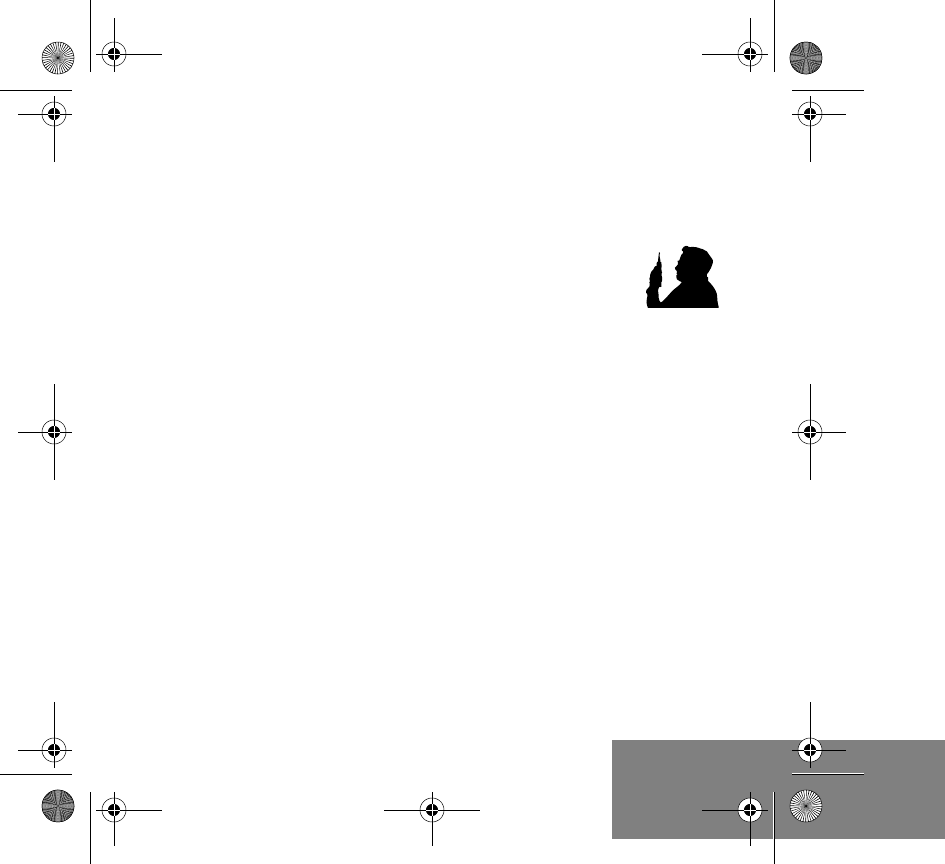
5English
Operating Instructions
• Transmit no more than the rated duty factor of 50% of the time. To transmit
(talk), push the Push-To-Talk (PTT) button. To receive calls, release the PTT
button. Transmitting 50% of the time, or less, is important because this radio
generates measurable RF energy exposure only when transmitting (in terms of
measuring for standards compliance).
•Hold the radio in a vertical position in front of the face with the
microphone (and other parts of the radio including the antenna) at
least one inch (2.5 centimeters) away from the nose or lips.
Antenna should be kept away from the eye. Keeping the radio at a
proper distance is important since RF exposures decrease with increasing
distance from the antenna.
• When worn on the body, always place the radio in a Motorola-approved clip,
holder, holster, case, or body harness for this product. Using approved body-
worn accessories is important because the use of non-Motorola-approved
accessories may result in exposure levels, which exceed the FCC
occupational/controlled environment RF exposure limits.
• If you are not using a body-worn accessory and are not using the radio in the
intended-use position in front of the face, ensure the antenna and the radio are
kept at least one inch (2.5 centimeters) from the body when transmitting.
Keeping the radio at a proper distance is important because RF exposures
decrease with increasing distance from the antenna.
Approved Accessories
• Use only Motorola-approved supplied or replacement antennas, batteries, and
accessories. Use of Non-Motorola approved antennas, batteries, and
accessories may exceed the FCC (IEEE) and ICNIRP RF exposure guidelines.
• For a list of Motorola-approved accessories, visit the following website, which
lists approved accessories for your radio model:
http://www.motorola.com/cgiss/index.shtml.
95C98-C.book Page 5 Wednesday, October 27, 2004 11:59 AM
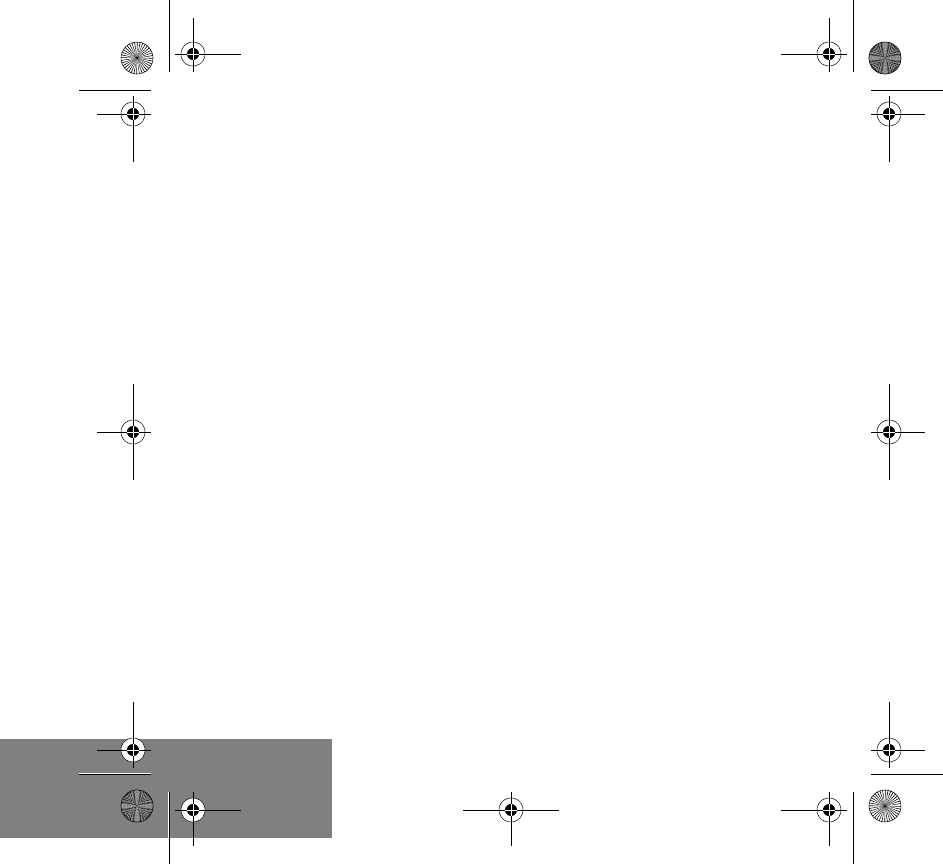
6
English
Additional Information
For additional information on exposure requirements or other training information,
visit http://www.motorola.com/rfhealth.
Electromagnetic Interference/Compatibility
NOTE: Nearly every electronic device is susceptible to electromagnetic
interference (EMI) if inadequately shielded, designed, or otherwise
configured for electromagnetic compatibility.
Facilities
To avoid electromagnetic interference and/or compatibility conflicts, turn off your
radio in any facility where posted notices instruct you to do so. Hospitals or health
care facilities may be using equipment that is sensitive to external RF energy.
Aircraft
When instructed to do so, turn off your radio when on board an aircraft. Any use of
a radio must be in accordance with applicable regulations per airline crew
instructions.
Medical Devices
Pacemakers
The Advanced Medical Technology Association (AdvaMed) recommends that a
minimum separation of 6 inches (15 centimeters) be maintained between a
handheld wireless radio and a pacemaker. These recommendations are
consistent with those of the U.S. Food and Drug Administration.
95C98-C.book Page 6 Wednesday, October 27, 2004 11:59 AM

7English
Persons with pacemakers should:
• ALWAYS keep the radio more than 6 inches (15 centimeters) from their
pacemaker when the radio is turned ON.
• Not carry the radio in the breast pocket.
• Use the ear opposite the pacemaker to minimize the potential for interference.
• Turn the radio OFF immediately if there is any reason to suspect that
interference is taking place.
Hearing Aids
Some digital wireless radios may interfere with some hearing aids. In the event of
such interference, you may want to consult your hearing aid manufacturer to
discuss alternatives.
Other Medical Devices
If you use any other personal medical device, consult the manufacturer of your
device to determine if it is adequately shielded from RF energy. Your physician
may be able to assist you in obtaining this information.
Use of Communication Devices While Driving
Always check the laws and regulations on the use of radios in the areas where
you drive.
• Give full attention to driving and to the road.
• Use hands-free operation, if available.
• Pull off the road and park before making or answering a call, if driving
conditions or regulations so require.
95C98-C.book Page 7 Wednesday, October 27, 2004 11:59 AM
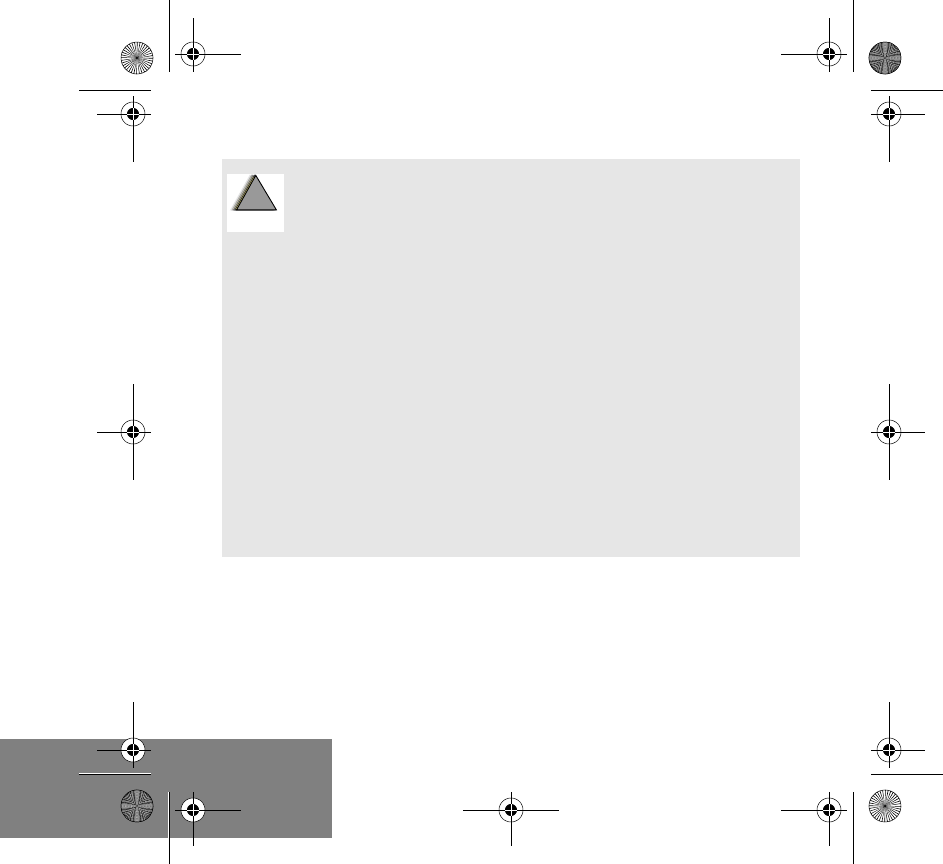
8
English
Operational Warnings
For Vehicle With Air Bags:
Refer to vehicle manufacturer's manual prior to installation of
electronic equipment to avoid interference with air bag wiring.
Do not place a portable radio in the area over an air bag or in the
air bag deployment area. Air bags inflate with great force. If a
portable radio is placed in the air bag deployment area and the air
bag inflates, the radio may be propelled with great force and cause
serious injury to occupants of the vehicle.
Potentially Explosive Atmospheres
(Explosive atmospheres refers to hazard classified locations that
may contain hazardous gas, vapors, or dusts.)
Turn off your radio prior to entering any area with a potentially
explosive atmosphere unless it is a portable radio type especially
qualified for use in such areas as Intrinsically Safe (for example,
Factory Mutual, CSA, UL, or CENELEC).
Do not remove, install, or charge batteries in such areas. Sparks in
a potentially explosive atmosphere can cause an explosion or fire
resulting in bodily injury or even death.
!
W
A R N I N
G
!
95C98-C.book Page 8 Wednesday, October 27, 2004 11:59 AM
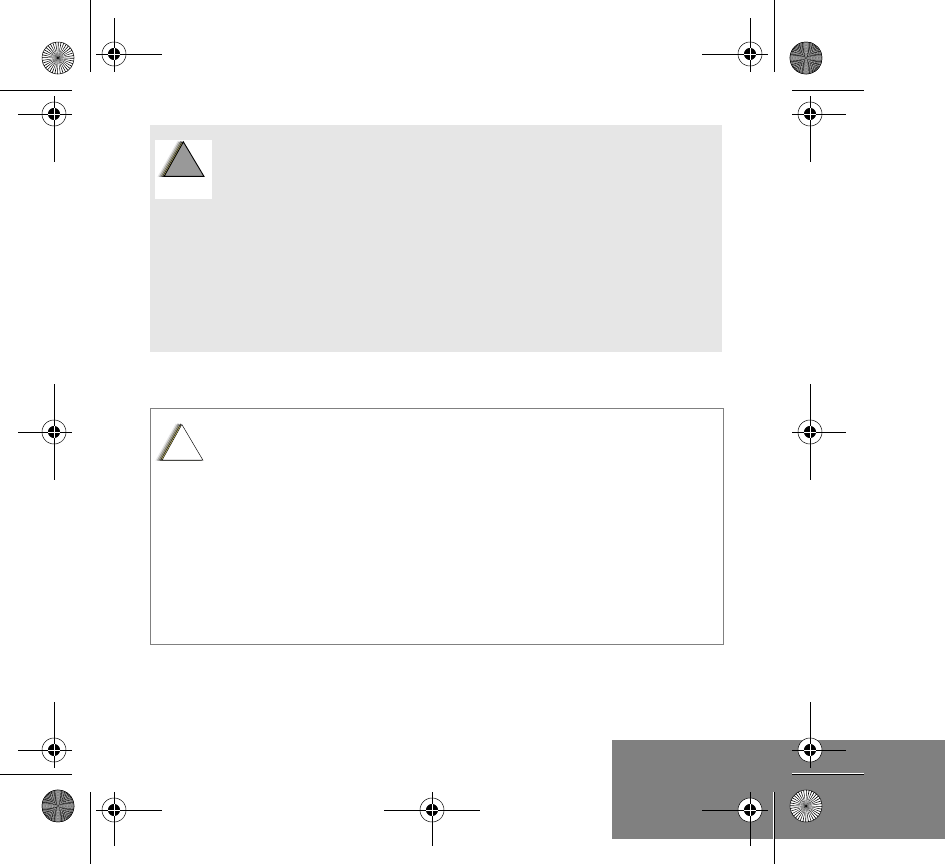
9English
Operational Cautions
The areas with potentially explosive atmospheres referred to
above include fueling areas such as below decks on boats, fuel or
chemical transfer or storage facilities, and areas where the air
contains chemicals or particles such as grain, dust or metal
powders. Areas with potentially explosive atmospheres are often,
but not always, posted.
Blasting Caps and Blasting Areas
To avoid possible interference with blasting operations, turn off
your radio when you are near electrical blasting caps, in a
blasting area, or in areas posted: "Turn off two-way radio." Obey
all signs and instructions.
Antennas
Do not use any portable radio that has a damaged antenna. If a
damaged antenna comes into contact with your skin, a minor burn can
result.
Batteries
All batteries can cause property damage and/or bodily injury, such as
burns, if a conductive material such as jewelry, keys, or beaded chains
touches exposed terminals. The conductive material may complete an
electrical circuit (short circuit) and become quite hot. Exercise care in
handling any charged battery, particularly when placing it inside a
pocket, purse, or other container with metal objects.
!
W
A R N I N
G
!
!
C
a u t i o
n
95C98-C.book Page 9 Wednesday, October 27, 2004 11:59 AM
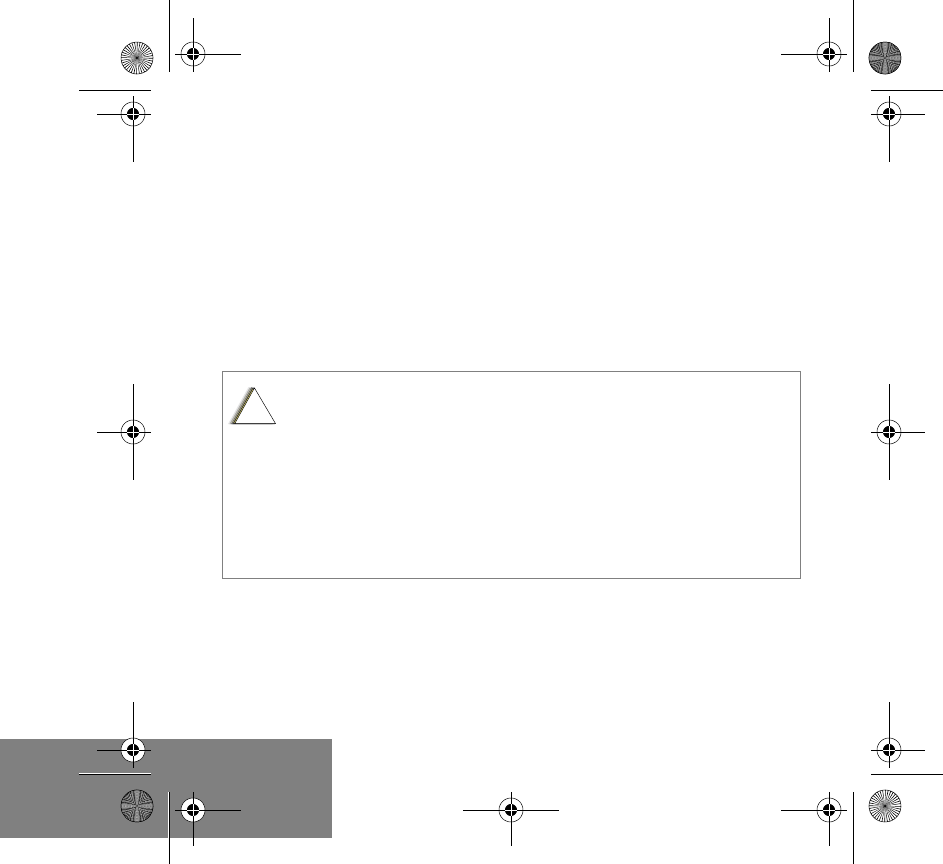
10
English
Intrinsically Safe Radio Information
The Intrinsically safe approval unit refers to a product that has been approved as
intrinsically safe by an approval agency (for example FM Approvals, CSA, UL, or
Cenelec) and certifies that a particular product meets the Agency's applicable
intrinsic safety standards for specific types of hazardous classified locations. A
portable radio that has been approved for intrinsic safety will have Approval label
attached to the radio to identify the unit as being Approved for specified
hazardous atmospheres. This label specifies the hazardous Class/Division/Group
along with the part number of the battery that must be used. The Intrinsically Safe
Approval Label will be located on the portable radio unit.
Operational Cautions for Intrinsic Safe Equipment
Warnings for Radios Approved as Intrinsically Safe
Radios must ship from the Motorola manufacturing facility with the hazardous
atmosphere capability and the intrinsic safety approval labelling (FM, UL, CSA,
CENELEC). Radios will not be upgraded to this capability and labeled once they
have been shipped to the field.
• Do not operate radio communications equipment in a hazardous
atmosphere unless it is a type especially qualified (for example, FM,
UL, CSA, or CENELEC approved). An explosion or fire may result.
• Do not operate a radio unit that has been approved as intrinsically
safe product in a hazardous atmosphere if it has been physically
damaged (for example, cracked housing). An explosion or fire may
result.
• Do not replace or charge batteries in a hazardous atmosphere.
Contact sparking may occur while installing or removing batteries and
cause an explosion or fire.
!
C
a u t i o
n
95C98-C.book Page 10 Wednesday, October 27, 2004 11:59 AM
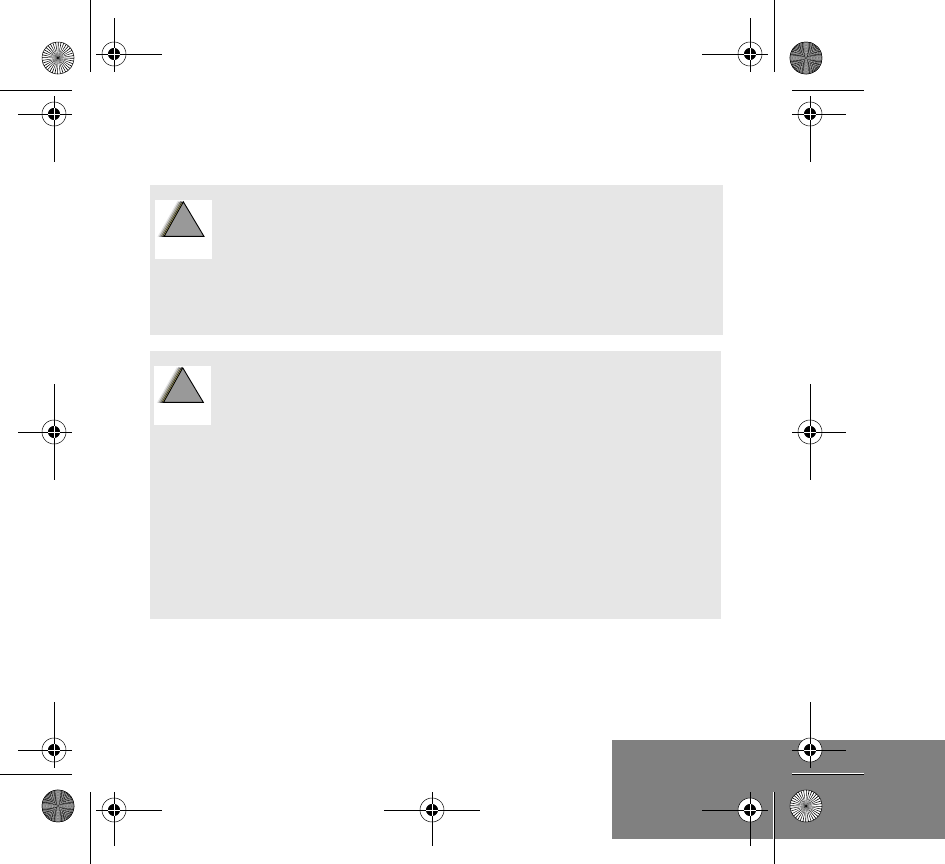
11 English
A modification changes the unit’s hardware from its original design configuration.
Modifications can only be made by the original product manufacturer.
• Do not replace or change accessories in a hazardous
atmosphere. Contact sparking may occur while installing or
removing accessories and cause an explosion or fire.
• Turn the radio off before removing or installing a battery or
accessory.
• Do not disassemble an intrinsically safe product in any way that
exposes the internal circuits of the unit.
• Failure to use an intrinsically safe approved battery or
Approved accessories specifically approved for the radio unit
may result in the dangerously unsafe condition of an
unapproved radio combination being used in a hazardous
location.
• Unauthorized or incorrect modification of the intrinsically safe
approved Product will negate the approval rating of the
product.
• Incorrect repair or relabeling of any intrinsically safe Agency-
approved radio could adversely affect the Approval rating of
the unit.
• Use of a radio that is not intrinsically safe in a hazardous
atmosphere could result in serious injury or death.
!
W
A R N I N
G
!
!
W
A R N I N
G
!
95C98-C.book Page 11 Wednesday, October 27, 2004 11:59 AM
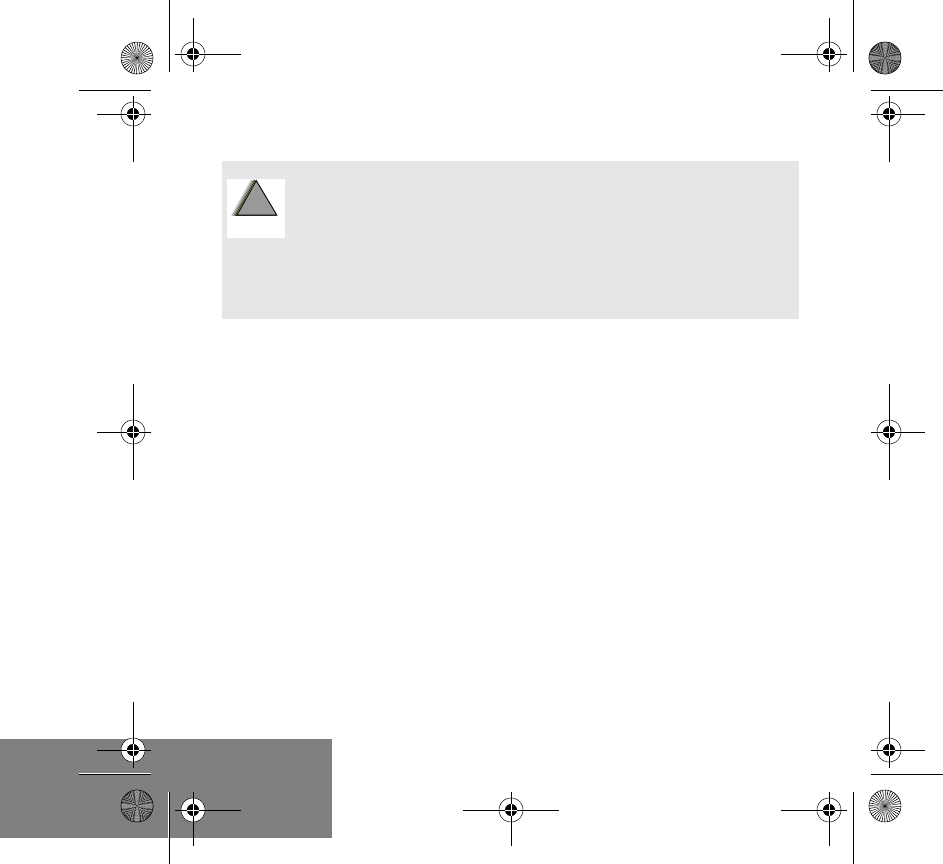
12
English
Repair
A repair constitutes something done internally to the unit that would bring it back
to its original condition.
Items not considered as repairs are those in which an action is performed on a
unit which does not require the outer casing of the unit to be opened in a manner
that exposes the internal electrical circuits of the unit.
Do Not Substitute Options or Accessories
The Motorola communications equipment certified as intrinsically safe by the
approving agency, (FM, UL, CSA, CENELEC) is tested as a complete system
which consists of the listed agency Approved portable, Approved battery, and
Approved accessories or options, or both. This Approved portable and battery
combination must be strictly observed. There must be no substitution of items,
even if the substitute has been previously Approved with a different Motorola
communications equipment unit. Approved configurations are listed by the
Approving Agency (FM, UL, CSA, CENELEC).
The Intrinsically Safe Approval Label affixed to radio refers to the intrinsically safe
classification of that radio product, and the approved batteries that can be used
with that system.
REPAIRS FOR MOTOROLA PRODUCTS WITH INTRINSICALLY
SAFE APPROVAL ARE THE RESPONSIBILITY OF THE USER.
Repairs to a Motorola FM approved radio product should only be
done at a location that has been FM audited under the FM 3605
repairs and service standard.
Contact Motorola for assistance regarding repairs and service of
Motorola intrinsically safe equipment.
!
W
A R N I N
G
!
95C98-C.book Page 12 Wednesday, October 27, 2004 11:59 AM

13 English
The manual PN referenced on the Intrinsically Safe Approval Label identifies the
approved Accessories and or options that can be used with that portable radio
unit.
Using a non Motorola intrinsically safe battery and or accessory with the Motorola
approved radio unit will void the intrinsically safe approval of that radio unit.
95C98-C.book Page 13 Wednesday, October 27, 2004 11:59 AM
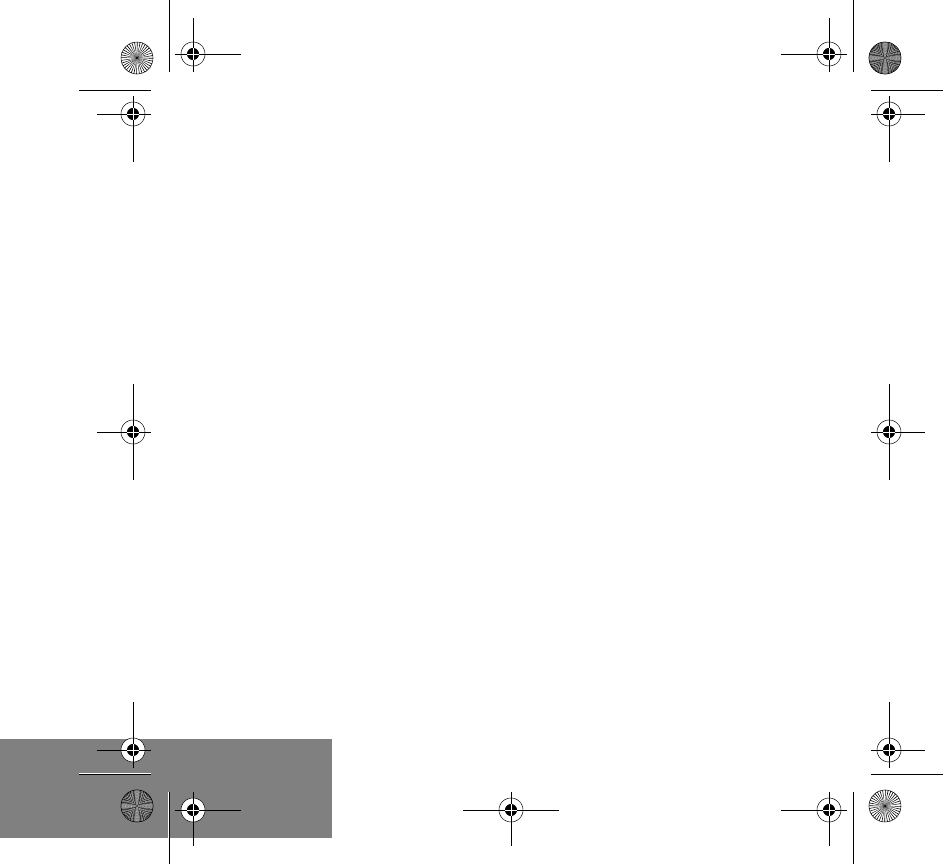
14
English
Notes
95C98-C.book Page 14 Wednesday, October 27, 2004 11:59 AM